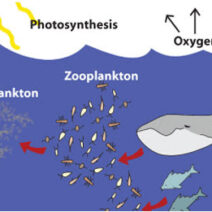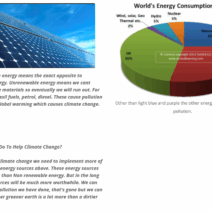Global warming signifies a profound escalatory phenomenon that encapsulates the ongoing rise in Earth’s average surface temperature, primarily driven by the accumulation of greenhouse gases in our atmosphere. This increment is not merely a theoretical concern; it manifests tangible impacts across ecosystems, weather patterns, sea levels, and biodiversity. Understanding this complex reality is crucial in deciphering the multifaceted climate crisis we are currently confronting.
The greenhouse gases, such as carbon dioxide (CO2) and methane (CH4), are predominantly released through activities like fossil fuel combustion, deforestation, and industrial processes. These gases act like a cloak around our planet, trapping heat that would otherwise escape into space. This process, known as the greenhouse effect, is not inherently detrimental; it is a natural aspect of Earth’s climate system. However, human activities have accelerated this effect to unprecedented levels, leading to catastrophic environmental ramifications.
Understanding the Science Behind Global Warming
The crux of global warming lies in two primary scientific principles: the greenhouse effect and the carbon cycle. The greenhouse effect refers to the way certain gases in the atmosphere trap heat. When solar radiation reaches Earth, some of it is absorbed, warming the planet. This energy is then radiated back into space; however, greenhouse gases capture a significant portion of this escaping heat, thereby warming the atmosphere. Without this effect, Earth would be too cold to sustain life as we know it.
The carbon cycle describes the movement of carbon among the atmosphere, oceans, soil, and living organisms. Carbon is released into the atmosphere through respiration, combustion, and decay processes. Naturally, it is sequestered back into the Earth through photosynthesis and absorption by the oceans. The balance of this cycle has been severely disrupted by anthropogenic emissions, leading to elevated atmospheric CO2 levels, thus intensifying global warming.
Impacts of Global Warming on Our Planet
The ramifications of global warming are profound, affecting not only the environment but also societal structures, health, and economies globally. Some of the most pressing impacts include:
Rising Sea Levels
As polar ice caps and glaciers melt, the consequence is a notable rise in sea levels, threatening coastal communities and ecosystems. Coastal flooding, loss of habitat, and increased salinity of estuaries can arise from this phenomenon. Inhabitants of low-lying areas face displacement, prompting potential humanitarian crises.
Extreme Weather Events
Another alarming consequence is the increasing frequency and severity of extreme weather events, including hurricanes, droughts, and wildfires. These catastrophic occurrences not only result in immediate destruction but also have long-term effects on agricultural productivity and water supply, leading to food insecurity and resource conflicts.
Biodiversity Loss
Climate change disrupts habitats, leading to shifts in species distribution and increased extinction rates. Ecosystems, which are intricate webs of organisms and their environment, suffer immense stress. Coral reefs, often referred to as the “rainforests of the sea,” are particularly vulnerable, facing widespread bleaching due to rising ocean temperatures and acidification.
Potential Solutions to Combat Global Warming
Addressing global warming necessitates a concerted and multifaceted approach involving policy frameworks, technological innovations, and behavioral changes. Some solutions include:
Transitioning to Renewable Energy
Shifting from fossil fuels to renewable energy sources, such as solar, wind, and hydropower, is imperative to mitigate greenhouse gas emissions. By harnessing natural energy sources, we can significantly reduce our carbon footprint while fostering sustainable economic growth.
Enhancing Energy Efficiency
Improving energy efficiency across various sectors—from transportation to industrial processes—can lower energy consumption and emissions. Initiatives like retrofitting buildings with energy-efficient materials and employing advanced technologies can yield substantial benefits.
Reforestation and Land Management
Upholding ecosystems through reforestation and sustainable land management practices can enhance carbon sequestration, absorb emissions, and restore biodiversity. Projects aimed at protecting existing forests are crucial to maintaining the planet’s natural resilience against climate change.
Policy Implementation
Governments worldwide must implement and enforce robust climate policies that support sustainability efforts. International agreements, such as the Paris Accord, aim to unite nations in a common endeavor to curtail emissions and limit global temperature rises.
The Importance of Individual Action
While systemic changes are vital, individual actions play a crucial role in this collective fight against global warming. Simple lifestyle modifications can significantly contribute to emissions reductions. Embracing public transportation, adopting plant-based diets, conserving energy at home, and advocating for environmental policies are potent ways individuals can create a ripple effect in their communities.
In summary, global warming is an urgent challenge that necessitates comprehensive understanding, immediate action, and unified efforts across all strata of society. As the manifestations of climate change become more pronounced, the onus is on everyone to recognize the implications of their actions and to strive for a sustainable future. The interconnectedness of our environment inspires a collective responsibility; thus, the term “global warming” transcends mere scientific jargon; it is a call to action.








